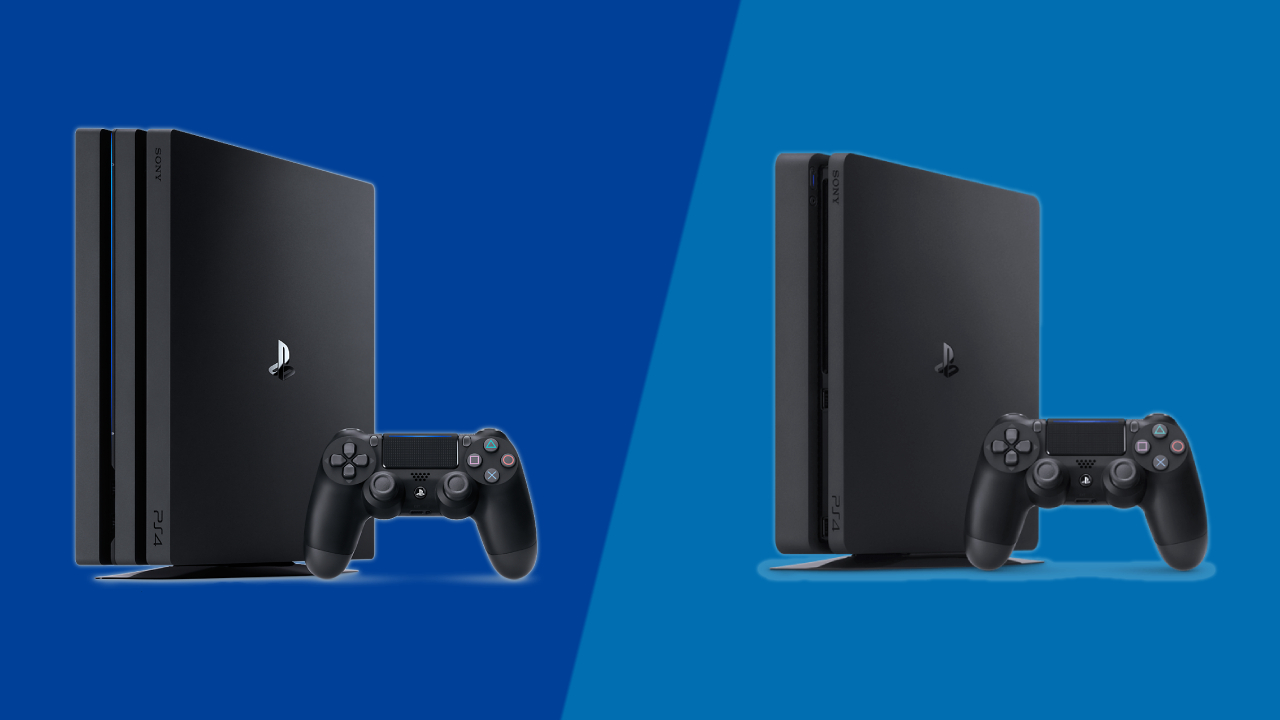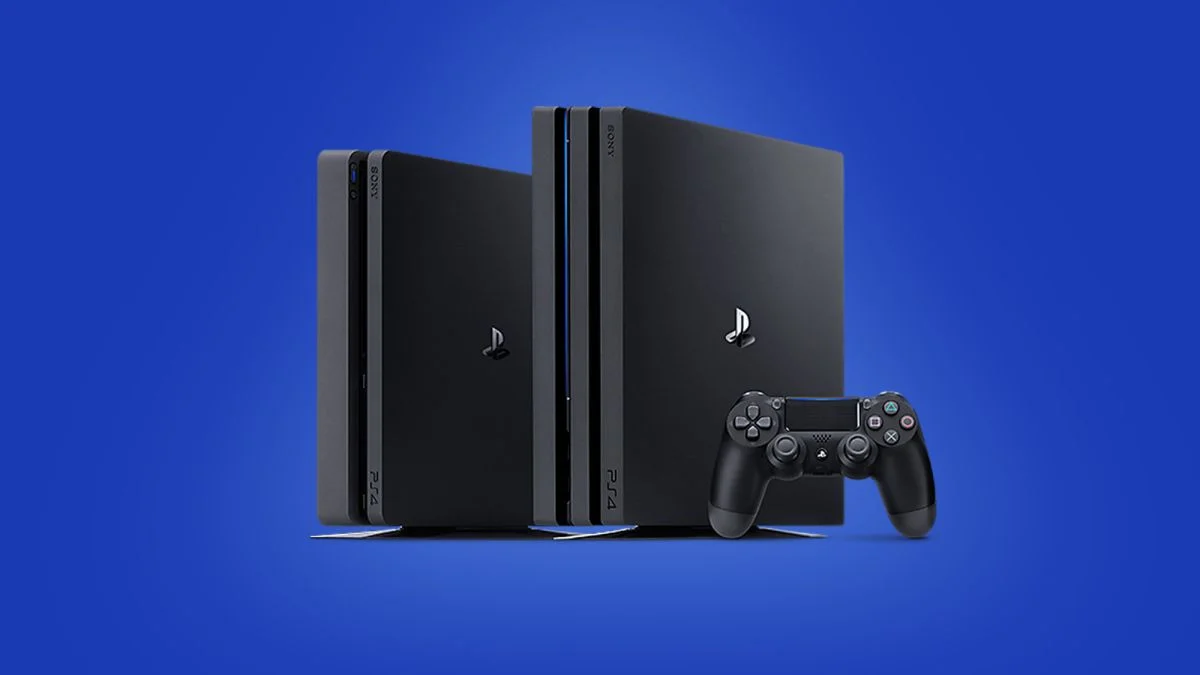How to fix the most frequent PS4 issues
Some of the most common PS4 issues persist even after eight years and the release of a new console. Many of the most serious issues, such as the notorious “Blue Line of Death” and ”PS4 white light of death” are limited to early PS4 production runs. Small difficulties, such as discs ejecting automatically, may occur regardless of how new your console is. We’ll show you how to fix any PS4 issue, no matter how major or minor it may be.
There are three PS4 variants available: the basic PS4, the PS4 Slim, and the PS4 Pro. Sony just refers to the “Slim” variant as a PS4, making it more difficult to distinguish it from the original PS4. If you can’t figure out which PS4 console you have, check at the edges. The edges of the PS4 are sharp, whereas the upgraded “Slim” model has softened edges. Make a mental note of the model you want to work with before you begin.
In addition, try shutting down your PS4 completely and then turning it back on to see if it helps. A complete power down can work wonders. Otherwise, keep reading.
Make contact with Sony.
First and foremost, here is all the information you’ll need to contact Sony if our tutorial does not resolve your specific issue.
Search the Sony error message library and follow the troubleshooting recommendations for the error you’ve encountered.
Malfunction: Blue indicator light that blinks
Eight years later, the “Blue Line of Death” remains the most devastating of all PS4 issues. The pulsing blue line, similar to the Xbox 360’s “Red Ring of Death,” signals a technical failure that may imply your console is no longer usable. If your PS4’s “Blue Line of Death” appears, it doesn’t necessarily mean your console is dead like the red ring does, but it serves the same purpose nonetheless: Notifying you that there is a serious problem that a factory reset of the PS4 may not solve.
When you power on the PS4, the LED indicator light on the side of the console should instantly become blue before turning white. However, on consoles suffering from the “Blue Line of Death,” the blue light pulses continually, signifying poor video output before switching off inexplicably. The console never transmits a signal to the TV in this situation, thereby bricking the device and prohibiting regular operation. A very small percentage of gamers are currently experiencing this issue, and those that do are more likely to have a late 2013 or early 2014 console.
Possible solutions
The flickering blue light could signal a range of hardware or software faults, according to Sony’s troubleshooting guide. It’s possible to look at a couple more choices as well.
If you are able to isolate a problem with the PS4 hardware, contact PlayStation customer support or take your console to an authorized Sony retail outlet, which can sometimes perform on-site repairs or replacements. If there isn’t a store in your region, you’ll probably have to ship your console to Sony. Your console may no longer be covered by the manufacturer’s warranty at this point: If this is the case, be aware that you may be required to pay a repair cost.
- Update the firmware on your television: A few users have reported that changing television firmware has repaired the audio-video signal problem. If you have a recent television, especially one with internet connectivity, consult the instruction manual and update the firmware. This may result in changes to HDMI settings and device compatibility.
- Examine the HDMI ports: Examine the HDMI port on both your TV and your PS4, as well as the HDMI cable, for any obvious flaws or damage. If feasible, try using different HDMI cables.
- Examine the power supply: Touch the PS4’s power button for at least seven seconds, or until the system beeps twice and shuts down. After that, unplug the AC power cord from the socket and inspect the AC IN connector and power cord for any obvious damage or irregularities.
- Examine the hard drive: Before moving the HDD bay cover outward, make sure your PS4 is turned off and detach the AC power cord and any other attached cords. After removing the hard disc, inspect it for any potential damage and ensure it is properly installed in the HDD bay.
- Reset the controller: Check that everything is correctly linked. Hold down the PS button on your controller until the system light changes to orange. Then, press and hold the PS button one more until the light changes to white. This solution has been tested and found to be effective in getting your PS4 to boot properly.
Malfunction: The red indicator light is blinking.
The “Red Line of Death” isn’t as well reported as the aforementioned blinking blue light, yet it’s almost as dangerous. The LED indicator light gracing the side of the console will flash red continuously on consoles suffering from the “Red Line of Death,” before switching off after the system emits three distinct beeps. The problem is linked to overheating issues, as detailed in the PS4 user handbook and confirmed by Sony, and might be the result of a fan malfunction. However, several customers have reported the issue within minutes after turning on the console for the first time. Fortunately, it does not indicate a completely bricked unit.
Possible solutions
If the problem persists and neither of the probable remedies below solves it, contact PlayStation customer care or take your system to an official Sony retail outlet to schedule a repair/replacement.
- Take a break: For at least seven seconds, or until the system beeps and shuts down, To turn on your PlayStation 4, hit the power button on the console’s front. Then, unplug the power source and leave the console to rest for an extended amount of time, or until it has adequately cooled down, before powering it back up.
- Give it plenty of room: Place your PS4 in a well-ventilated environment with enough of airflow, avoiding carpet and such services wherever feasible. Furthermore, some users have found that positioning the console vertically helps reduce overheating (though this shouldn’t be the case given that the location prevents access to either side vent).
The issue is a malfunctioning HDMI cable and a damaged HDMI port.
Although it is not a PS4-specific or widespread issue, some PlayStation users have reported problems as a result of a faulty HDMI port shipped with their PS4 systems. The issue, which results in no audio or visual output on the TV, is frequently caused by a connection obtrusion produced by a bent piece of metal within the console’s built-in HDMI port. Although the reason for the bent component is unknown, it basically renders the port unsuitable because the bent portion no longer connects correctly with the HDMI cord. Furthermore, there have been complaints of malfunctioning HDMI cables that just do not work for whatever reason.
While this issue was rectified in later PS4 shipments following the console’s launch, if you buy a used unit or are suffering HDMI troubles, you should search for alternative solutions below.
Possible solutions
If neither of the potential options listed below resolves the issue, contact Sony. Although not confirmed, Sony will most likely send you a free replacement cable within a few days of the problem being identified.
- Examine the HDMI ports: Examine the HDMI ports on your TV and your PS4 for any obvious flaws or damage, as well as the HDMI cable. If feasible, try using different HDMI cables.
- Bend the metal back: If you can plainly see a piece of metal twisted upward within the console’s HDMI port, use a pin or tiny tool to bend the damaged piece down. Check to see whether the port knocked out any teeth or caused any extra damage to the HDMI cable. Even if the console starts working, you should still contact Sony and request a replacement.
- Use a different HDMI cable: If you receive a broken HDMI cable from Sony, just replace it with another cable you have on hand or purchase a better HDMI cable.
Problem: Dual Shock 4 analogue sticks that have been damaged
We appreciate the Dual Shock 4 as a PS4 controller for a variety of reasons, but the soft rubber cushioning on its analogue sticks can easily break when playing a game that requires fast motions, such as Bloodborne or Dark Souls. However, just because the rubber tears doesn’t mean you have to throw away the controller!
Possible solution
Analog stick covers, such as GelTabz, which are available in retailers such as GameStop and on Amazon, fit directly over your analogue stick, providing a more comfortable gaming experience while also protecting the stick itself. Despite their flat design, they are slightly rough, so your fingertips don’t slip, and four are provided in each package. GelTabz in PlayStation format is compatible with both Dual Shock 3 and Dual Shock 4 controllers.
You might only need to clean your controller as well. As you play, dirt and filth build their way around the buttons and inside the controller, so if you haven’t cleaned your Dual Shock 4 in a few months — or years — it’s time. Before trying to re-sync your PS4 controller, make sure to read our tutorial on how to thoroughly clean your Dual Shock 4.
PlayStation Network connectivity issues are a bug.
The most common complaint with the PS4 is network connectivity issues, which frequently manifest as NW-31201-7 and WV-33899-2 failures. The PSN goes down more frequently than we’d like, although it’s usually not down for significant periods of time. Network issues are typically caused by the PSN undertaking service maintenance (error code CE-33991-5), and you will simply have to wait it out. Outside of maintenance periods, however, there are a few simple steps you can take to get back online.
Possible solutions
- Changing your DNS settings may help if you can’t connect to your PS4 despite having everything else on your home network working. To begin, navigate to Network Settings and select Custom for the type of connection you use, which can be either Wi-Fi or cable. Choose your network, then the Automatic IP Address option, and then Do Not Use for DHCP Host Name. A dialogue with two DNS configuration options should appear; select Manual. After that, configure the primary DNS to “8.8.8.8” and the backup DNS to “8.8.4.4.” The console should then do its tests and reconnect you to the internet.
- Update the firmware on your router: Connection problems are frequently caused by out-of-date firmware. Typically, information on how to check for a firmware update can be found on the bottom or back of your router/modem. Follow the instructions provided, or contact your internet service provider for help. You may be able to connect after updating the firmware on your equipment. At the very least, it can be ruled out as a possible reason.
- Unplug and reconnect: Turn off your PS4 and unplug it from its power supply. Changing your DNS settings may help if you can’t connect to your PS4 despite having everything else on your home network working.
- Re-learn your network: It’s possible to get your PS4 online again by teaching it how to connect to your home network once more. Once you instruct your PS4 to “forget” your network, you’ll need to follow the procedures to reconnect.
Make sure the problem isn’t on Sony’s end if those measures don’t work. Visit the PlayStation Network service status website for a complete list of features and their current status. If they’re green, everything is going well; if they’re any other hue, problems exist. You’ll also see a notice at the top of the page about upcoming maintenance, so you’ll know ahead of time when PSN will be unavailable.



